if you’re an architect or interior designer, or an urban planner then you know that the places we live and work in have a big impact on our well-being; that’s why more and more designers and urban landscapers are incorporating vertical gardens and roof gardens into their plans. Vertical gardens are walls that are covered in vegetation, while roof gardens are, as you might have guessed, gardens that are located on rooftops. Both of these features can bring a host of benefits to the people who use the spaces they’re in.
Today we will look at how our cities are designed and the importance of the presence of nature within them, this is what we will cover:
The Latest on research
Just today, I read the extract of the study by ISGlobal Barcelona made in 92 European cities covering a population of 57 million people. In this study they found that 4% of summer mortality is due to urban heat Islands and that by increasing by 30% the trees planted in cities they could reduce by a third these deaths of course the circle finally closes and everything makes sense.
The study also shows that the presence of greenery with adequate urban planning can reduce substantially cardio vascular disease, dementia and also the risk of depression and the levels of stress; yet in average in European cities trees only cover 15% of the urban area – so much has yet to be done.
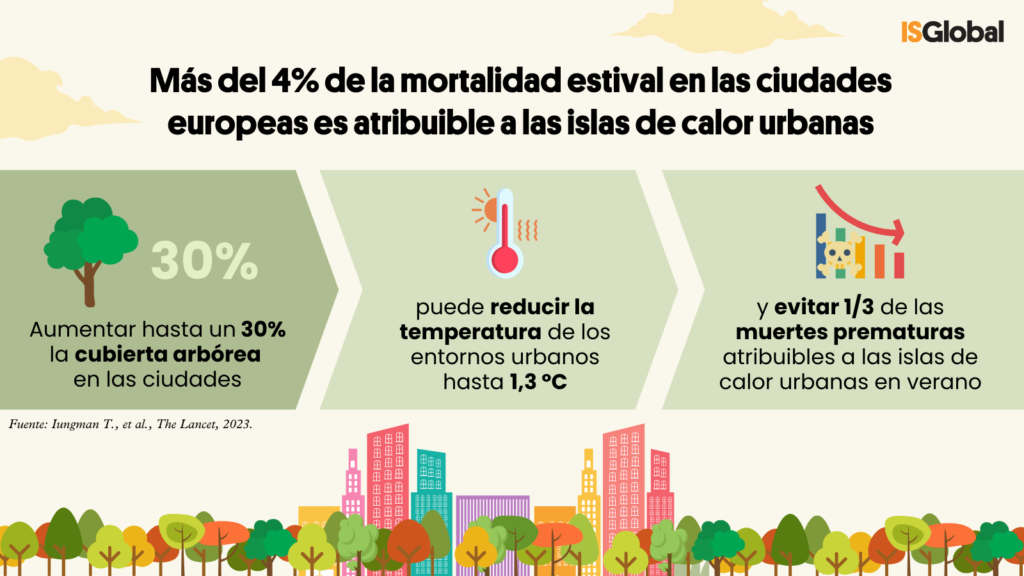
Meanwhile in Paris ….
A few months ago the French Parliament recently approved a new law requiring all new commercial buildings to partially have their roofs covered with plants by at least 50% and the remaining 50% may be used for solar panels. While this will initially cost building owners and developers more money, that investment will be partially offset by the benefits of incorporating either a green roof or solar energy. Green roofs act as additional insulation reducing energy costs and act as a rainwater catchment system. Additionally, green roofs can be used for food production or as additional public space, extending per-square-foot use of a building to its exterior. More benefits include improved air and water quality as well as reduce GHG emissions and pollution. The life span of green roofs generally extends two to three times beyond traditional roofing materials.
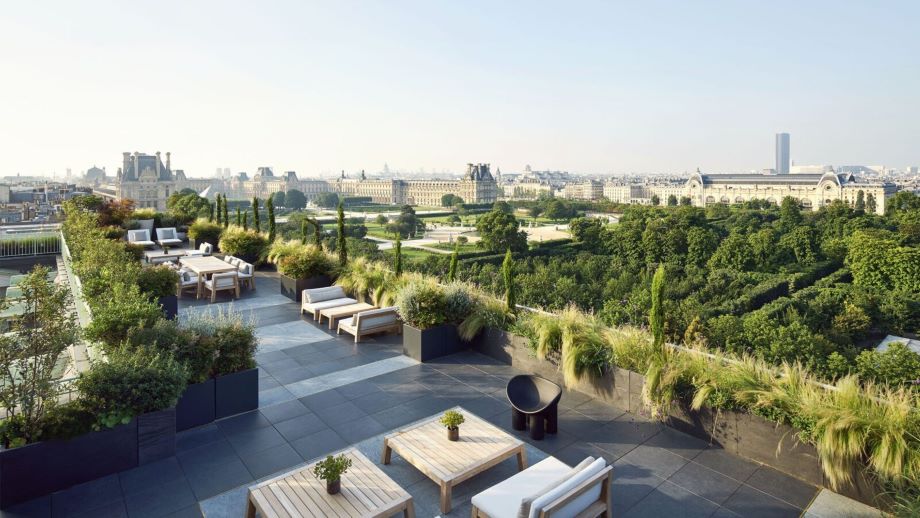
“Green roof temperatures can be 30–40°F lower than those of conventional roofs and can reduce city-wide ambient temperatures by up to 5°F. In addition, green roofs can reduce building energy use by 0.7% compared to conventional roofs, reducing peak electricity demand and leading to an annual savings of $0.23 per square foot of the roof’s surface”
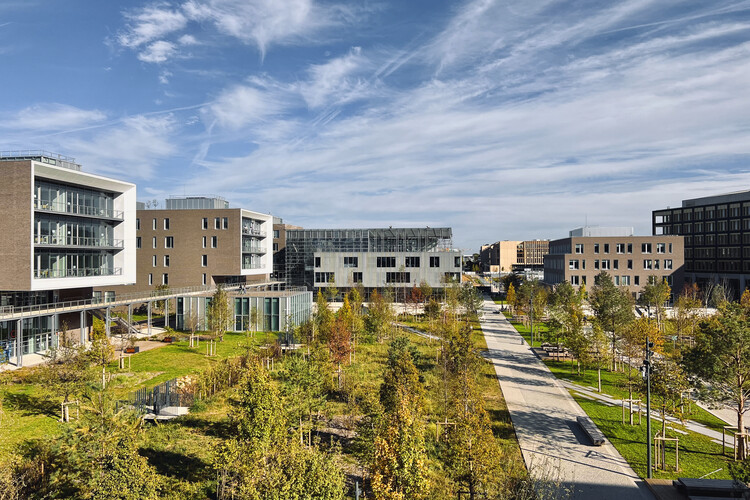
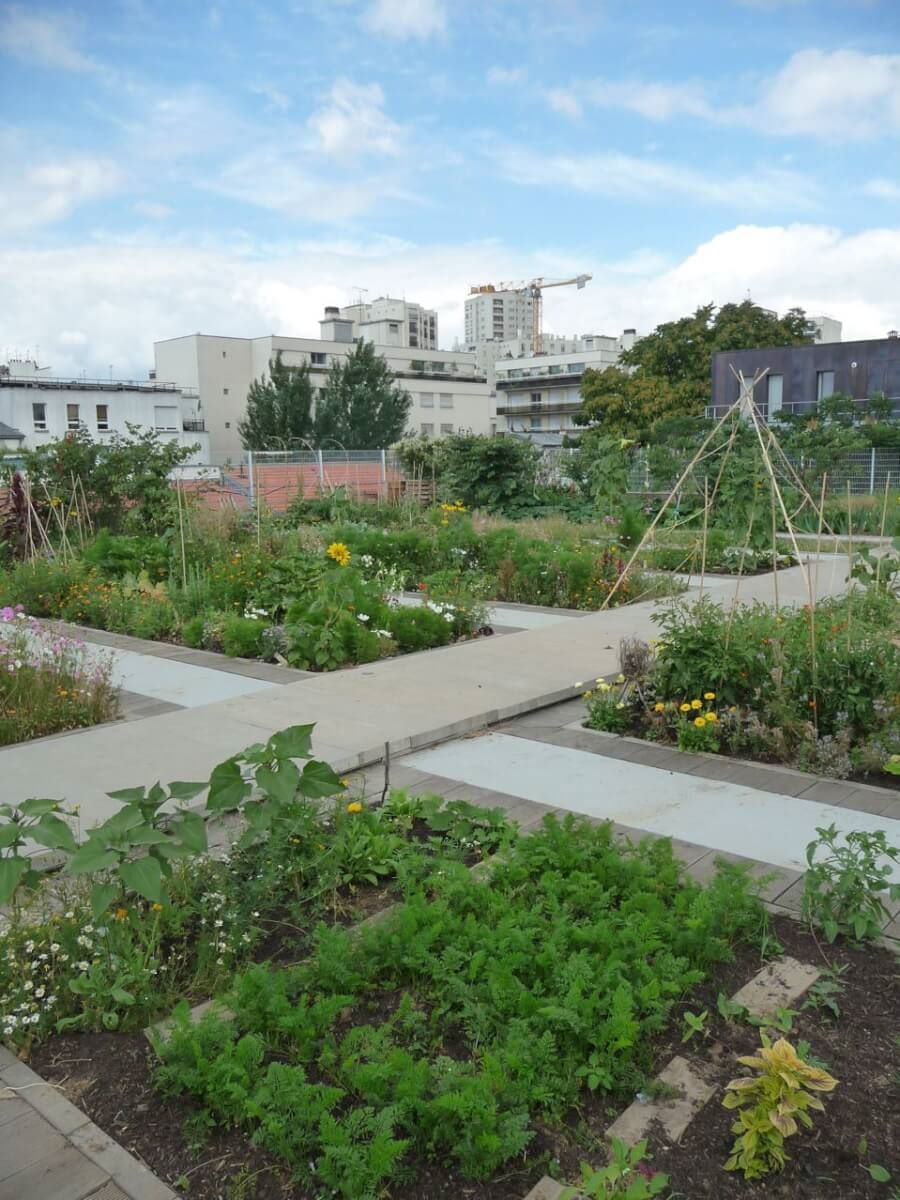
credit: Pariscotejardin
Hermès _ A secret garden
Difficult to get in, but once you do, you can find this corner of paradise on the roof of the Hermès boutique. Pastel pink and white roses, sage, rosemary, hibisbus, balsam, magnolias, lilies and even an apple tree from which they actually make apple jam.
One of the most obvious benefits of vertical gardens and roof gardens is that they can help to improve air quality. Plants act as natural filters, absorbing pollutants from the air and releasing clean oxygen as well as reducing noise pollution And let us not forget the importance of rewilding our cities
Let’s save the bees
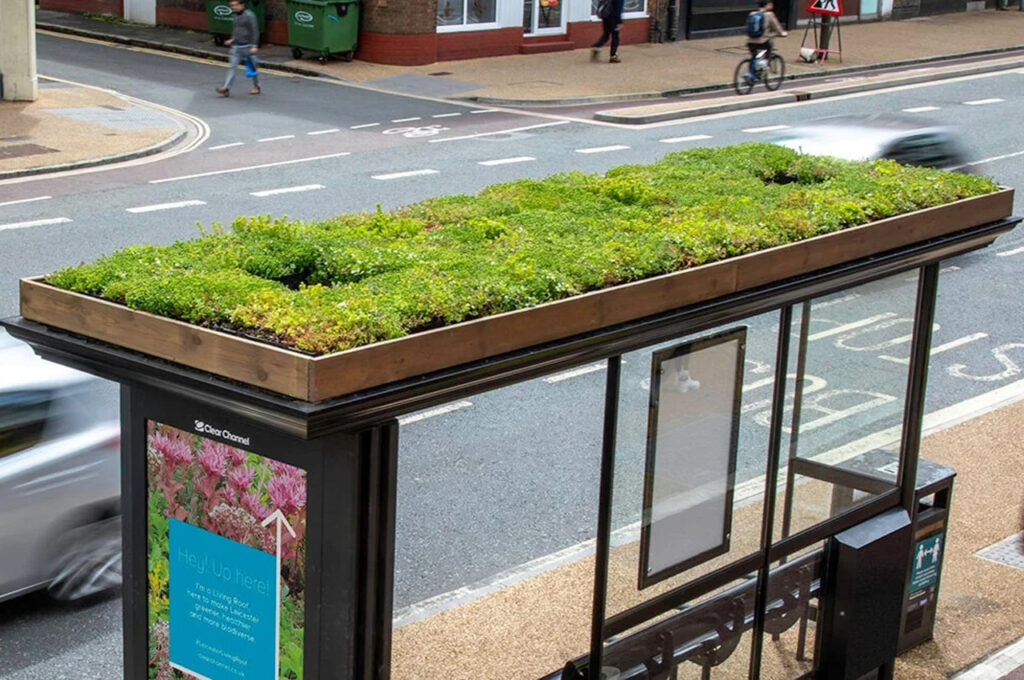
Another innovative initiative , in an effort to help out important insects like bees and butterflies, bus stops across the United Kingdom (UK) and Europe are getting living roofs. Small gardens on bus shelter roofs are being planted with flowers chosen to help support the struggling insects. According to the Wildlife trusts, Insects such as butterflies and bees have dropped by 50% in the UK since 1970.
Now called the “bee bus stops” or “buzz stops”, these gardens provide much-needed islands of nature in a concrete jungle for our little buzzing friends; and we all know the importance of bees
Finally, vertical gardens and roof gardens can help to create a more pleasant environment overall nice a place to socialize . They can provide a refreshing dose of nature in our urban environments. They can also help to cool down a space by providing shade and evaporative cooling. And lets not forget the health benefits of stress reduction, less fatigues and headaches and lets just face it they also just look nice!
Vertical gardens
My top 5 picks of city Vertical gardens
Vertical gardens or green walls are also important, these can be created by artists with a specific purpose or they can in fact turn out to be a piece of art themselves.
-
- One of my favourite being the musèe Quai Branly in Paris originally created by Patrick Blanc in 2004 but had to undergo restoration in 2017 and 2018.Today it hosts 376 varieties of 15.000 plants that come from all over the world to mirror the origins of the pieces being displayed inside the museum.
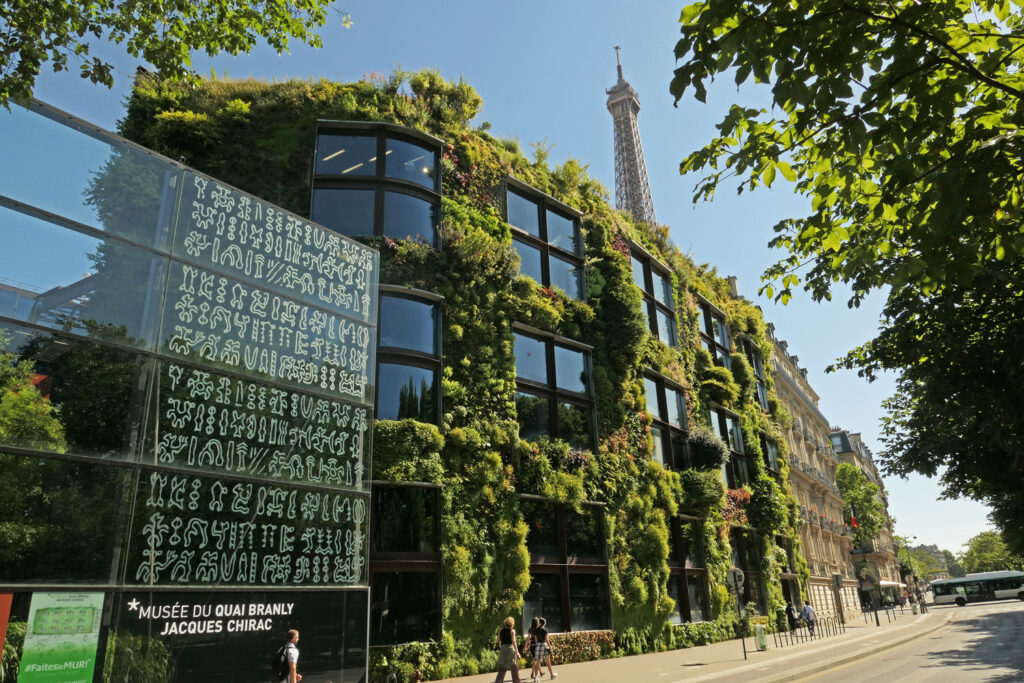
- But also Caiax Forum a Modern art Gallery in Madrid always by the world famous green artist Patrick Blanc. This vertical garden is 4951 square feet 250 species and 15.000 plants. These plants cover a range from moss to begonias colouring the city streets.
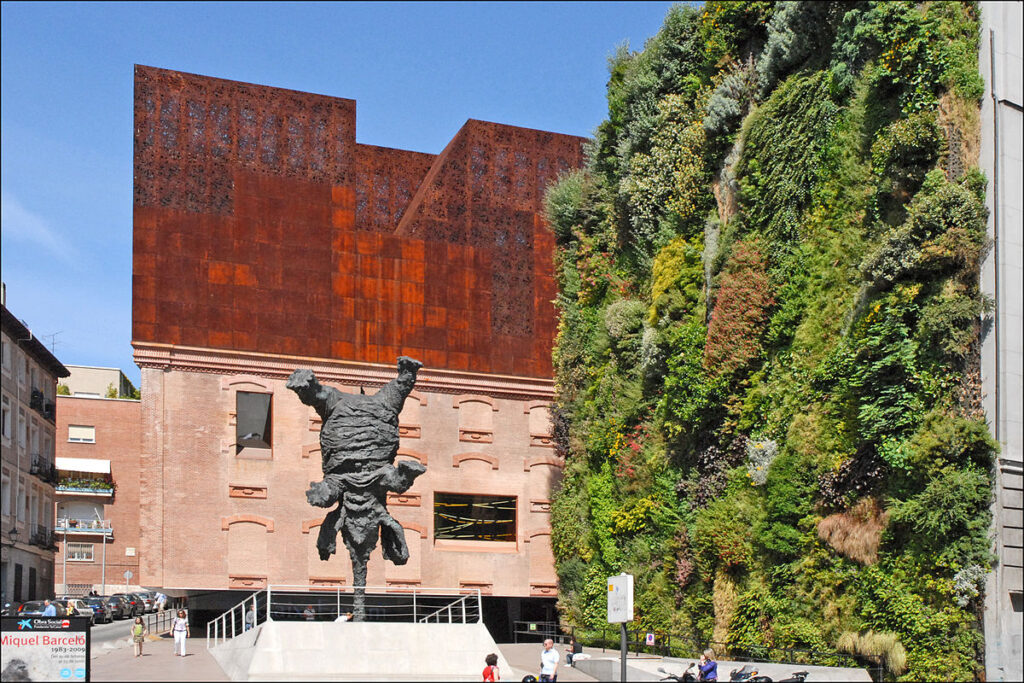
- The long wall of the Universidad del Claustro de Sor Juana in Mexico city – is one big living green wall – however in this vertical garden you will also find a bicycle and a tricycle.
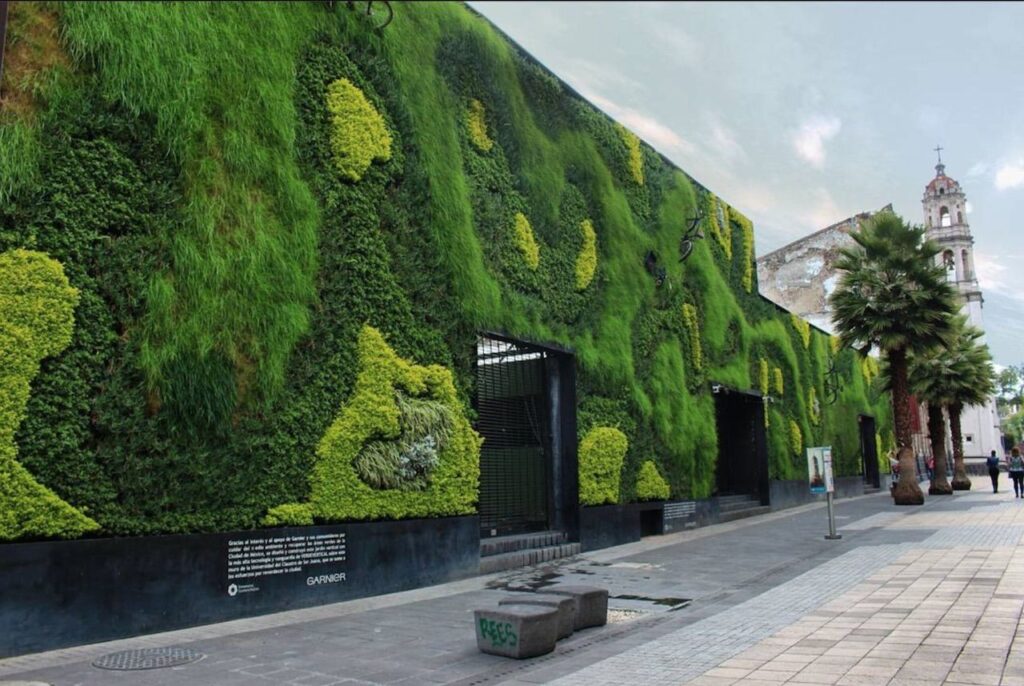
- Something a bit closer to home for me , and still created by the talented Patrick Blanc in the Garden wall at the Hotel Sereno in Lake Como. This incredible walls has the impression that it almost finishes in the water. Other green walls are also present inside and around other areas of the hotel’s gardens and are an integral part of the overall landscaping.

- Outside the Guggenheim Art Museum in Bilbao, Spain, one would find a giant 43-foot tall ‘plant puppy’ made out of a steel substructure and an array of colourful vegetation. Jeff Koons created this cute and vibrant vertical garden masterpiece in 1997 and we just couldn’t go past this impressive creation. This was definately an inspiration at the time of what could be done.
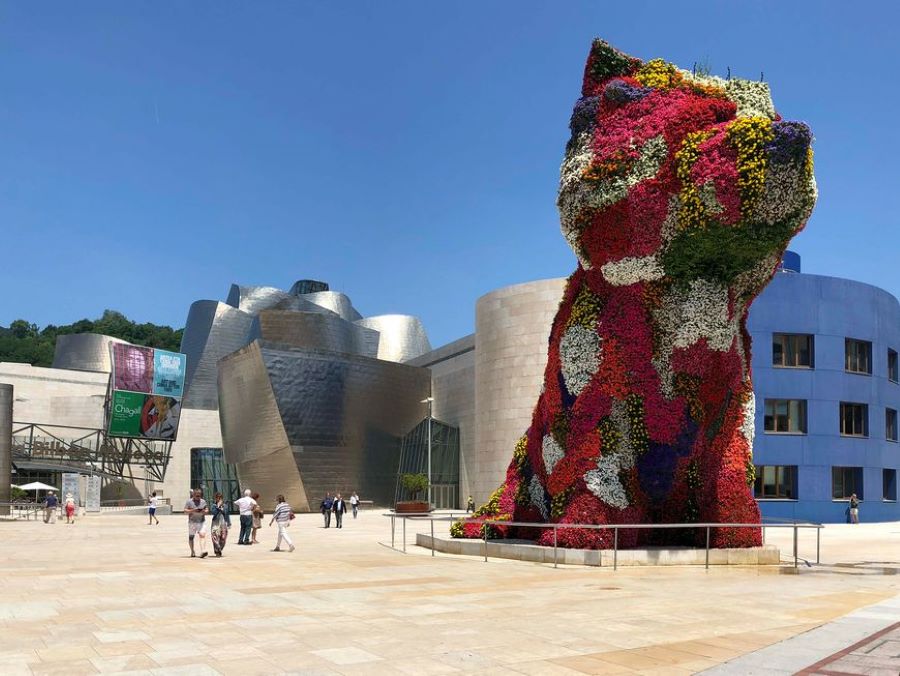
Conclusion
As you can see, there are many reasons why urban planner and landscapers are are incorporating roof gardens and vertical gardens into their plans. And as cities change their skin over time I can expect this to be more and more integrated and I am confident that we are on the right trajectory. Ofcourse there is so much more to make our cities truly Biophilic cities but if we start planting more trees and greenery and increasing the 15% indicated in the ISG study it is already an achievement. However lets not forget why we need to put green spaces back into our cities and its direct benefits on our health by reducing One of the most obvious benefits of vertical gardens and roof gardens is that they can help to improve air quality. Plants act as natural filters, absorbing pollutants from the air and releasing clean oxygen as well as reducing noise pollution And let us not forget the importance of rewilding our cities.
If you would like to delve deeper making our spaces more healthy and aligned with nature or if you are just curious , come join us in our community THE BIOPHILIC HUB and discover more click HERE
And if you would like to start your very own Biophilic journey in 2023 why don’t you check out our article Start your 2023 Biophilic design year with your entrance
Thanks for reading and sharing: